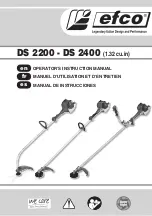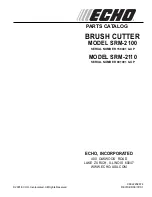
Instruction
Manual
ESG
85
Plus
page
14
_____________________________________________________________________________
Within the determined use of the tool only the blades (Pos.-No. 10a & 10b) are permitted to
be changed by the customers.
Attention
Do not damage the seals of the tool.
If the seals are damaged the warranty is invalidated.
5.4. Remarks on the use of the battery cartridge and charging unit
.
The charging unit is run with a nominal voltage of 230 V and a frequency of 50-60 Hz.
New batteries must be charged prior to use. To charge the battery cartridge (Pos.-No. 7) the
power plug of the charging unit has to be plugged into the power supply and the battery
cartridge has to be pushed into the charging unit. The charging time is one hour. The
charging level of the battery cartridge can be checked by a LED
4
.
green
battery cartridge is charged
red
battery cartridge is empty and is just being charged
flashing
battery cartridge is not pushed in properly or too hot,
a sound signal occurs
Is the battery plugged in correctly the LED changes from green to red and the charging
procedure starts. When the charging procedure is terminated the LED changes again to
green. Simultaneously a signal occurs for 5 seconds.
No other battery cartridges e.g. dry batteries or car batteries etc. are permitted to be used
neither in the tool nor in the charging unit.
As soon as the speed of the machine decreases noticeably the battery must be recharged. Do
not recharge a partially discharged battery as a precaution.
If charging a battery which has currently been used or which was laying in the sun for a
longer period of time the LED might flash red. In this case wait for a while. The charging
procedure starts after the battery cooled down.
Does the LED flash red and green and does an audible tone occur for 20 seconds it is not
possible to charge that battery. The poles of the battery or the charging unit are dirty
or the battery is low or damaged. If you want to charge two batteries in a row wait for 15
min before you charge the second battery.
Avoid great fluctuating temperatures under 0°C and above 40°C. Through these fluctuations
damages may result for the battery cartridge as well as for the charging unit. The best
operation temperature is between 15-25 °C.
Do not leave or operate the charging unit in rain or snow. Do not charge the battery near
lightly inflammable materials or gases.
Do not use the cord to transport the charging unit or to pull the plug out of a wall socket
with force. Do not insert strange parts into the ducts of the charging unit.
4
The charging level of the battery can also be verified by the LED of the tool at the end of a crimping cycle. See
chapter 4.3 for further information.





































